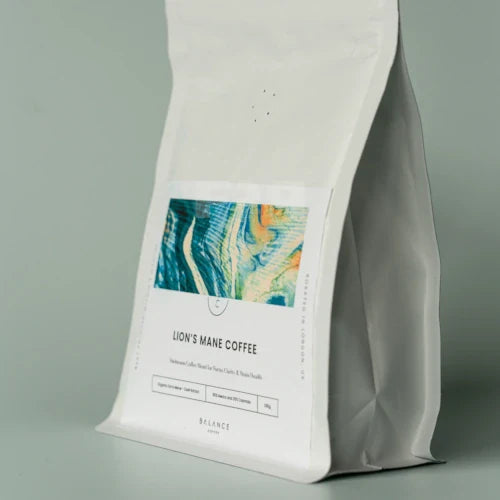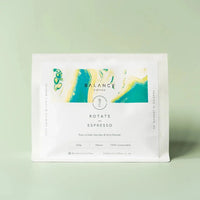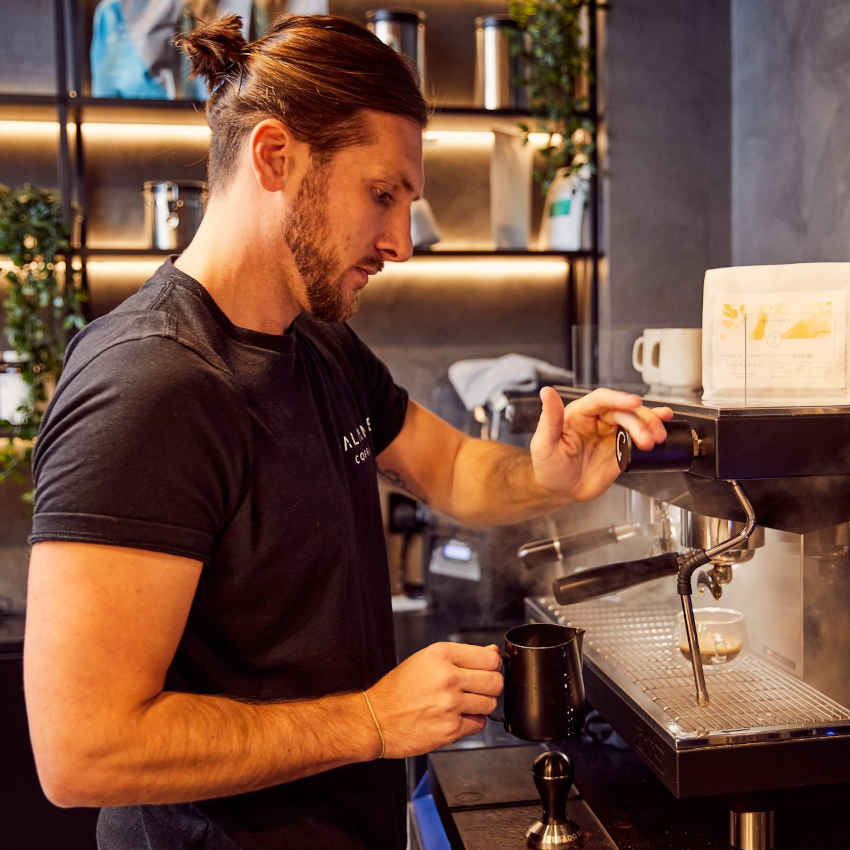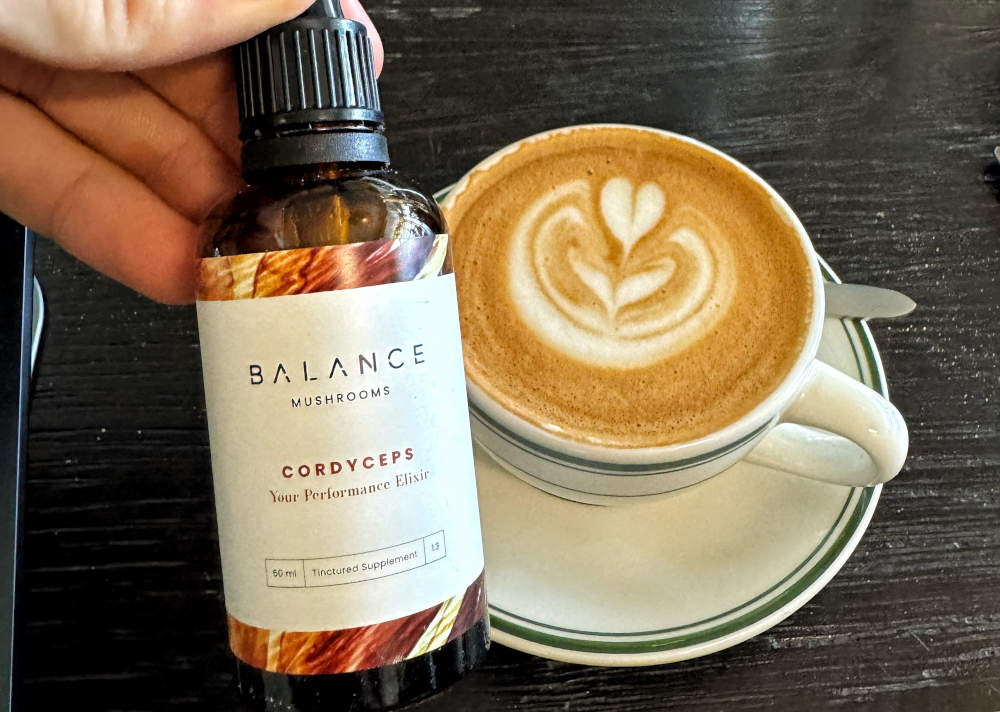Before I show you how to make an espresso coffee step by step, let me answer some important questions you might have.
Note: I have 12+ years of experience working as a professional barista and coffee trainer. You can be confident you’re getting the best insight from my experience over the last decade, to ensure you learn precisely how to make an espresso coffee at home.
And if you read to the end, I will provide you with my best recommendation for the perfect whole coffee bean or ground coffee that will make your cup at least 2X better.
If you prefer watching a video on this topic, below is a video that does not complicate the entire process:
With that out of the way, below is a detailed answer to the questions you have about espresso.
What type of coffee beans should I use to make espresso?
For espresso, it's best to use fresh, high-quality coffee beans. Arabica beans are preferred for their superior flavour and aroma not to mention the health advantages of Arabica over robusta. Robusta coffee is grown at lower altitudes and grows under harsher conditions.
This impacts the plant's resilience levels, making it produce higher levels of caffeine than Arabica - in turn, this is the perfect recipe for those nasty caffeine shakes you get sometimes from drinking lower-grade coffee.

If you needed a reason to find a smoother, cleaner caffeine buzz without the jitters then you’ve come to the right place.
But if you’re a fan of a more robust, cigar-like taste be my guest, you can still find a blend on the internet of Arabica and Robusta beans, which may produce a rich and intense espresso.
My top tip is to search for beans which have been roasted specifically for espresso for the best results. I have used Rotate Espresso and Darkfire Energy for espresso coffee and they were amazing. You definitely should try it out for yourself too.
Want to try a sample pack, try the Balance Starter Bundle. It comprises our best sellers and has the best flavours like milk chocolate, strawberry, halzenut, fig etc.
How fine should I grind my coffee beans for espresso?
Coffee beans should be ground very fine for espresso, resembling the texture of powdered sand or slightly coarser than table salt. The fine grind is crucial for creating the resistance necessary for proper espresso extraction.
Similar to wine, some coffees have a higher body and are thicker in texture and some have a lower body. Espresso coffee drinkers are typically looking for a richer mouthfeel and texture otherwise referred to as viscosity, which in simple terms means ‘body’.
If you find that your espresso is too watery or weak, you’ll likely have to make your coffee grind finer using the settings on the grinder.
Alternatively, you may want to speak to your coffee roaster to ensure they can find the right grind setting for your machine.
For more information on grind size, read my article best grind size for coffee beans.
How much coffee do I need for one shot of espresso?
Typically, you'll need about 7-9 grams of ground coffee for a single shot (1 ounce) of espresso and about 18-20 grams for a double shot (2 ounces). Adjustments may be necessary based on your specific espresso machine and preferences.
I recently wrote about the best ground coffee beans, some brands I researched for that article are the gem. It is worth the read.
How long should the espresso extraction take?
A good rule of thumb is that extraction should take about 25-30 seconds from the moment you activate the water in the machine or from the moment you push the shot button. If it takes less time, your grind may be too coarse; if it takes more, your grind might be too fine.
You may want a visual reference of this, so we created a YouTube video showcasing the perfect espresso extraction.
Why is my espresso bitter?
Bitterness in espresso is often due to over-extraction, meaning water runs through the coffee grounds too slowly. This can be corrected by adjusting your grind to be slightly coarser or tamping the coffee less firmly.
If you have found the perfect grind setting and you’re confident of that, then you should double-check the weight of ground coffee you’re adding to your basket if this is too high for the espresso handle, this may also be causing the issue.
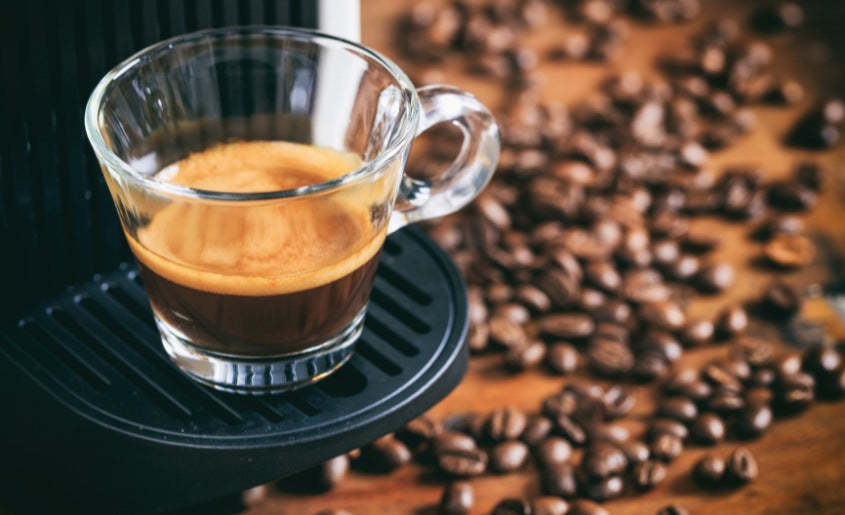
Finally, tamping too hard may also be a problem, so don’t apply too much unnecessary force and you’ll do just fine.
My espresso tastes weak. What am I doing wrong?
Weak espresso usually results from under-extraction, where water flows through the grounds too quickly. Try a finer grind or increase the dose of coffee to increase extraction time. You can review your tamp pressure too, but make sure that’s the thing you check third in line.
How do I know if I've tamped the coffee correctly?
A correctly tamped coffee will have a smooth, even surface without any cracks or uneven areas. The pressure should be firm and consistent, around 30 pounds of force. A good tamp sets the stage for an even extraction.
Most people overthinking tamping. Although we naturally all have different pressures based on how strong we are, one firm tamp to ensure all the grounds are visually pressed into a bed or puck is all you need.
I’ve trained hundreds, maybe even thousands of baristas before and this is usually something they spend too much time focusing on.
I’d suggest weighing your dose and timing your extraction for better-tasting coffee at the end of it.
Can I make espresso without an espresso machine?
While traditional espresso requires the pressure of an espresso machine to extract properly, alternatives like AeroPress, Moka pot, or French press can produce a strong, concentrated coffee that resembles espresso, though it may lack the exact texture and crema.
So the answer is yes you can achieve something similar without a machine however, it won’t be like the real deal.
A coffee machine produces 9 bars of pressure which is a lot of force, which most hand machines or smaller units simply cannot achieve.
This is reflected in the results and flavour of the cup.
How often should I clean my espresso machine?
For the best-tasting espresso machine longevity, clean the machine after each use by wiping down the portafilter and group head and running a water cycle through.
Deep cleaning and descaling should be done according to the manufacturer's instructions, typically every few months depending on usage and water hardness.
Here is a step-by-step sage machine cleaning in this article and how to descale a coffee machine in this one here.
What is the importance of water temperature in making espresso?
The ideal water temperature for brewing espresso is around 195°F to 205°F (90°C to 96°C). Temperatures outside this range can lead to under-extraction or over-extraction, affecting the espresso's flavour profile.
Now that I have answered some of your burning questions, let’s get into this article properly, shall we?
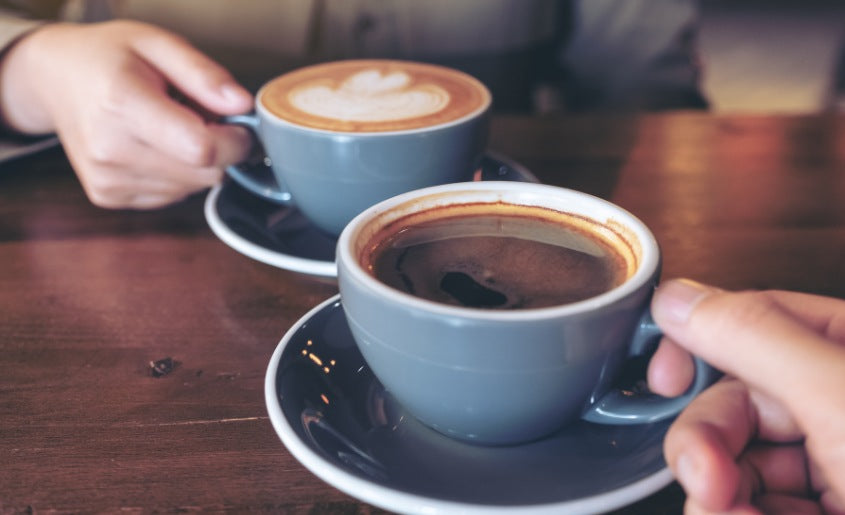
Starting the adventure of making the perfect espresso means learning the basics.
Espresso is a strong coffee with a deep taste and a creamy top known as crema. It's the base for many coffee drinks.
As we explore how to make espresso coffee, having the right tools and ingredients is important.
Getting ready this way makes brewing more fun. And improves your espresso's taste, capturing this coffee's true spirit.
First, let’s get ready by gathering all the equipment and ingredients we need for a great espresso.
Gathering Your Tools and Ingredients
Getting ready to make espresso involves having the right tools.
For example, you need the espresso machine, grinder, tamper, and espresso cup.
But it would only be complete with top-quality coffee beans (you can get that here).
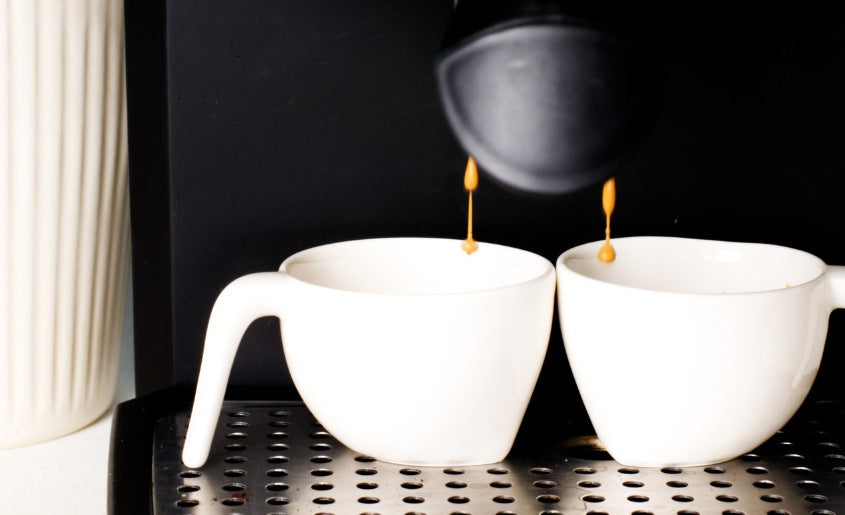
Throw the Lion's Mane mushroom drops to the mix, and you have got double combo benefits.
This preparation ensures every part of the process is set up to make the best shot of espresso possible.
As you pay attention to these important details, the next key step is to grind the coffee beans.
The size and evenness of the grind are crucial because they greatly affect the espresso's taste, smell, and texture.
Now, I’ll shift your focus to the detailed work of grinding coffee.
But first, below is a set of tools I use and have found to stand the test of time (get them and thank me later).
- I recommend the Sage barista pro for making espresso coffee
- Sage the smart grinder pro works for grinding your coffee evenly.
- Kitchen scale
- Milk frother
Perfecting the Grind
Grinding the coffee beans is where your fun begins, and it's super important because it's when your coffee's true taste starts to come out.
Frankly, getting your grind right for espresso can be a bit tricky. Because if it's ground too fine, your coffee might end up tasting bitter. If it's too coarse, your espresso might be weak and not as tasty.
This careful step helps make your espresso's flavour, deciding if your coffee will be strong and rich.
For this stage do the 3 steps below!
Here’s a video on how to grind coffee.
Step 1 - Fill Your Grinder
Put the beans you've measured into the grinder. If you're using an electric burr grinder, check that it's on the espresso or fine grind setting.
Step 2 - Grind Away
You start grinding. It'll only take a few seconds. If you're using a hand grinder, you give it a gentle shake to help get an even grind.
Step 3 - Check the Grind
Look at the ground coffee. It should look like fine sand. If it's too coarse, adjust the grinder setting to fine-grind; if too fine, make it a bit coarser.
After the beans are ground, get your tamper ready. Make sure it's all set to turn your ground coffee into yummy, aromatic espresso that makes every sip a treat for you.
If you don’t have an electric burr grinder, please read my article on how to grind coffee without a grinder. It’s a very detailed guide you will enjoy reading.
Pressing the Coffee Right (AKA Tamping)
Tamping the coffee is important. It's another big step that affects how your espresso will taste.
Applying the right pressure makes sure the water flows evenly through the coffee. This way, you get all the good flavours.
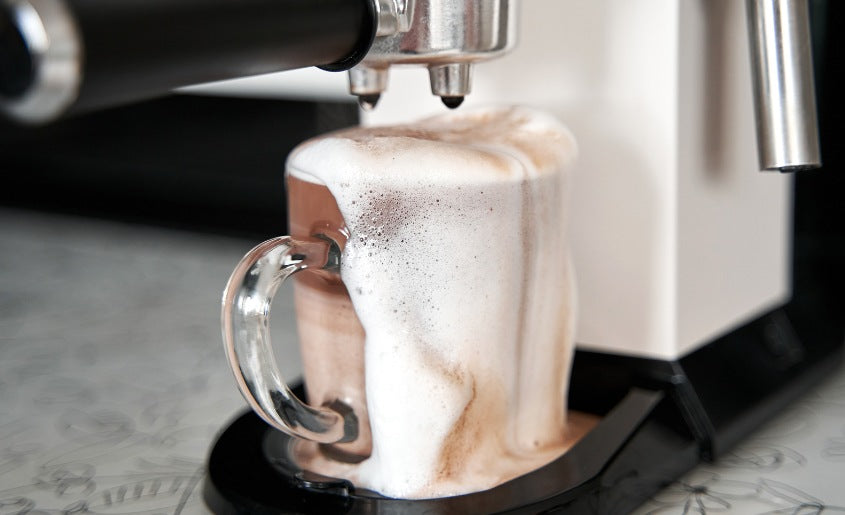
It's important to press or tamp evenly to avoid problems like channelling.
Channelling is when water misses the coffee, making your espresso not taste as good.
To tamp the coffee, do the following steps!
Step 1 - Fill the Portafilter
First, put the right amount of ground coffee into your portafilter. Make it level.
Step 2 - Settle the Grounds
Gently tap the side of the portafilter with your hand or on a counter. This helps remove air pockets.
Step 3 - Hold the Tamper Right
Grip the tamper like you would a doorknob. Keep your elbow at a 90-degree angle for best control.
Step 4 - Press Down
Place the tamper on the coffee. Press down with even pressure. Aim for about 30 pounds of pressure.
Step 5 - Twist to Polish
After pressing, give the tamper a slight twist. This smooths the coffee surface and seals the edges.
Step 6 - Check the Surface
The coffee should be smooth and level. This ensures water flows evenly through the coffee when brewing.
Step 7 - Clean the Edges
Wipe away any loose ground from the rim of the portafilter. This ensures a tight seal in the machine.
Step 8- Insert the Portafilter
Place the portafilter back into the espresso machine. Make sure it's locked in tight.
After tamping the coffee just right, it's time to use the espresso machine.
Getting Your Machine Ready
I treat the preparation of the espresso machine as just as important as dialling in my shot of espresso. You can read my article on how to make coffee with an espresso machine here.
It is a step that sets you up for success or failure when trying to put together a toasty cup.

A clean machine that's been warmed up makes sure the coffee tastes and smells its best.
Thus showing off all the hard work you put into the earlier steps.
The type of water you use is really important too, because it can change how your espresso tastes and how good it is. I have also written extensively on filtered water coffee. Do check it out.
To get your machine ready, do the following steps!
Step 1 - Turn It On
Start by turning on your espresso machine to warm up. This might take a few minutes.
Step 2 - Clean It
Quickly clean the portafilter and the machine's head. Use a damp cloth to wipe any old coffee grounds away.
Step 3 - Fill With Water
Make sure the machine's water tank is full with fresh, clean water. The quality of water matters!
Step 4 - Warm It Up
Run water through the machine and portafilter to warm them up. This also helps clean any leftover ground.
Step 5 - Check the Settings
If your machine has settings for temperature or pressure, check they are right for espresso.
Step 6 - Grind Your Coffee
While the machine warms up, grind your coffee beans to the right size for espresso.
Step 7 - Insert Coffee
Put the ground coffee into the portafilter. Press it down evenly but not too hard.
Step 8 - Lock the Portafilter
Place the portafilter back in the machine. Make sure it's locked in tight.
Step 9 - Place Your Cup
Put a cup under the spout where the espresso will come out. If you can, warm up the cup first.
Step 10 - Brew
Press the button to start brewing your espresso. Watch the magic happen!
Brewing The Shot
For you to brew it right, I want you to do the following steps:
Step 1
Lock the portafilter in place in the espresso machine.
Step 2
Start the shot. The ideal brewing time for an espresso is about 25-30 seconds. Watch for a steady stream of coffee that looks like warm honey.
Step 3
If your machine has a pre-infusion feature, use it to gently soak the grounds before full pressure is applied. This helps achieve a more even extraction.
Monitor the Extraction Of The Coffee
Now when it comes to the extraction process, I want you to do the following steps.
Step 1
Pay close attention to the flow of the espresso. The first few seconds will be slow, followed by a quicker flow of rich, dark coffee, and it should finish with a lighter, honey-coloured flow.
Step 1
The ideal extraction will yield about 2 ounces (60 ml) of espresso for a double shot.
Let Your Results Show You the Way
If your espresso is too quick and tastes weak, make your coffee grind finer or tamp harder.
If your espresso is too slow and tastes bitter, make your coffee grind coarser or tamp lighter.
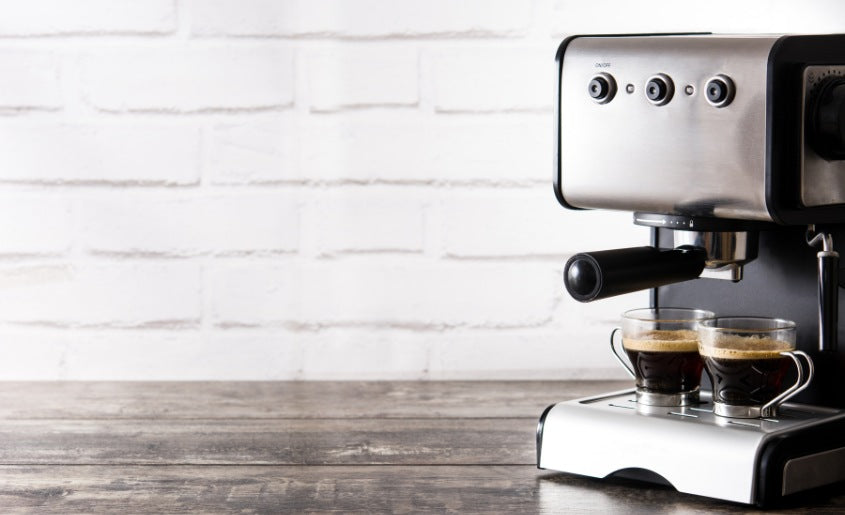
Enjoying the creamy top and strong flavour of a good espresso means you're doing great.
A couple of months back, I wrote about how to make a double shot espresso at home, it is a completely powerful resource for more learning.
Now, think about what to add to your espresso. This makes drinking it even more fun. You can get creative!
Option To Add Milk
If you want to get creative and prepare a milk-based drink, all you need to do is froth your milk.
I recommend you read this article which provides the 3 best ways you can froth your milk quickly and easily.
You can also read my article on how to froth milk without a frother latte foam style or how to steam milk with a Sage machine.
Let’s touch on serving shortly, shall we?
Serving with Style
The art of serving espresso adds a final touch of splendour and personal flair to the coffee experience.
Traditional methods highlight the espresso's richness, while new ideas and approaches cater to diverse taste buds and occasions.
This step is about personalising the espresso journey, transforming a simple coffee shot into a memorable moment.
As you explore various serving suggestions, you should not forget the importance of maintaining the espresso machine's cleanliness and functionality.
Proper cleaning and maintenance ensure each espresso shot attests to the art and science of coffee brewing.
Ensuring Cleanliness and Maintenance
Cleaning your espresso machine often is key to keeping your coffee tasting great and your machine lasting longer.
This habit makes sure your espresso shot is tasty and honours the whole process from bean to cup.

By keeping things clean, also remember the start of our espresso adventure: picking the coffee beans.
Choosing the right beans isn't just a step; it's a big part of making sure your espresso is the best it can be.
For the best coffee beans, I have written quite a slew of articles on this. The resources below will guide you towards finding the best brands with mind-blowing coffee beans.
- best coffee beans for espresso UK
- best coffee beans Uk
- best healthy coffee beans UK
- best coffee beans in the world
Appreciating the History and Culture
Espresso coffee started in Italy over 100 years ago. It's a quick way to make coffee by pressing water through coffee grounds.
Luigi Bezzera made the first machine in 1901, but Achille Gaggia made it better in the 1940s. His idea made espresso creamy and tastier.
Yet, it was Angelo Moriondo who owned the first-ever patent for an espresso machine, interesting, right?
Now, over 32.82% of people all over the world drink espresso according to the Balance Coffee global coffee consumption statistics. It's the base for many coffee drinks like cappuccinos and lattes.
Later, machines for homes made it easy for you to make espresso anytime.
Espresso is known for its strong flavour and is both science and art. It shows how much people love good coffee and the careful steps to make it.
Espresso's story is about new ideas, keeping traditions, and always trying to make the best coffee.
Conclusion
When learning how to make your first cup of espresso coffee, it can seem a bit of a hassle.
But just like with anything, it takes continuously practising the steps I have laid down for you above to become an expert.
So there you have it; everything you need to start brewing a quality cup of espresso every day.
Whether it is grinding the coffee, tamping, preparing your machine or pulling off the shot, this article should help out.
Now if you love whole or ground coffee beans that are free from mould, mycotoxins or pesticides, but rich in 1000+ antioxidants and vitamin B3, check out our Balance speciality coffee shop.
Each bag is roasted to perfection to bring out flavours such as milk chocolate, strawberry, cranberry, hazelnut, fig and fruity notes. Shop now & save £5.


